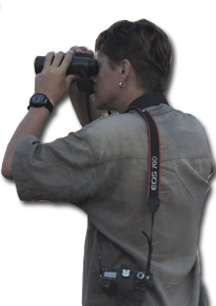Birdwatching is a popular activity that brings joy to those observing birds in their natural habitats. In the Czech Republic, this activity is significantly influenced by weather conditions, including warm and cold fronts, seasons, wind, rain, and time of day. Understanding these factors helps birdwatchers plan their trips and maximize their chances of exciting observations.
Warm and Cold Fronts
Warm and cold fronts play a key role in bird migration. The passage of a cold front often brings rapid temperature drops and strong winds, which can slow birds down and force them to seek temporary shelter. This creates excellent opportunities for birdwatchers, as birds gather in suitable resting areas. On the other hand, warm fronts bring milder weather and weaker winds, facilitating smooth bird migrations. During these periods, large flocks of migrating birds are often visible.
Seasons
Seasons are a determining factor for bird diversity and activity. Spring and autumn are the main migration periods when millions of birds pass through the Czech Republic. Spring is characterized by the return of birds from the south, while autumn marks their departure to wintering grounds. Summer is ideal for observing nesting birds and their young, whereas winter focuses on overwintering species such as northern geese and ducks.
Wind
The direction and strength of the wind are critical for bird movement. Tailwinds, particularly from the south or northwest, facilitate migration, while headwinds slow birds down and force them to rest. Strong winds can push birds off their intended course, increasing the chances of spotting rare species. In coastal areas of the Czech Republic, such as Třeboňsko or Poodří, strong winds can even bring in seabird species.
Rain and Cloud Cover
Rain has a dual effect on birds. Light rain often does not deter them, but heavy rain forces them to pause migration and seek shelter. This can create opportunities for birdwatchers, as birds gather in safe spots such as reed beds, bushes, or hedgerows. Cloud cover also affects bird activity; under overcast skies, birds may remain active for longer periods, whereas sunny weather concentrates their activity in the early morning and evening hours.
Time of Day
Time of day significantly influences bird activity. The best time for observation is early morning when birds forage after the night and are most active. Evening hours are also suitable, as many species prepare for the night and become active again. Some species, such as owls and nightjars, are nocturnal and require specialized equipment like thermal cameras or night vision binoculars.
Recommendations for Birdwatchers
- Monitor Weather Forecasts: Plan your trips based on the forecast. The passage of fronts or calm weather following a storm is ideal for observation.
- Focus on Migration Periods: Spring and autumn offer the greatest species diversity.
- Take Advantage of Wind: Watch wind direction, as tailwinds increase the chances of observing large flocks of birds.
- Adapt to the Time of Day: Wake up early to catch morning activity and consider evening outings for other species.
- Prepare for Rain: Bring waterproof clothing and gear, as rain can lead to unexpected sightings.
Conclusion
Weather plays a crucial role in birdwatching. Understanding its impact on bird behavior allows birdwatchers to plan more effectively and increases the likelihood of successful and unforgettable experiences. With this knowledge, birdwatchers can gain deeper insights into natural processes and fully enjoy the beauty of the avian world.


























